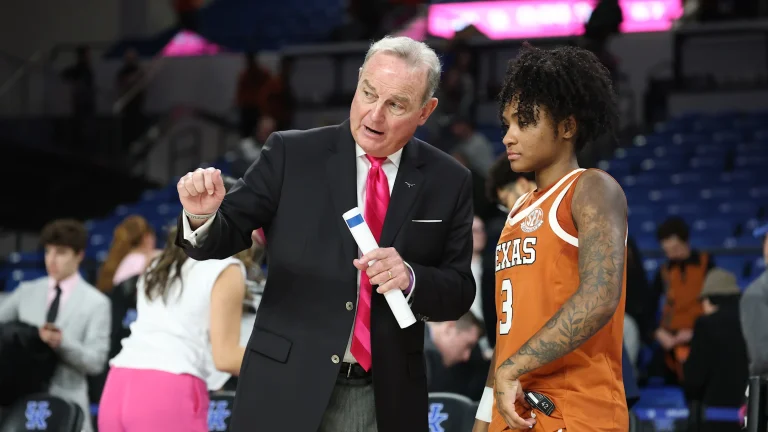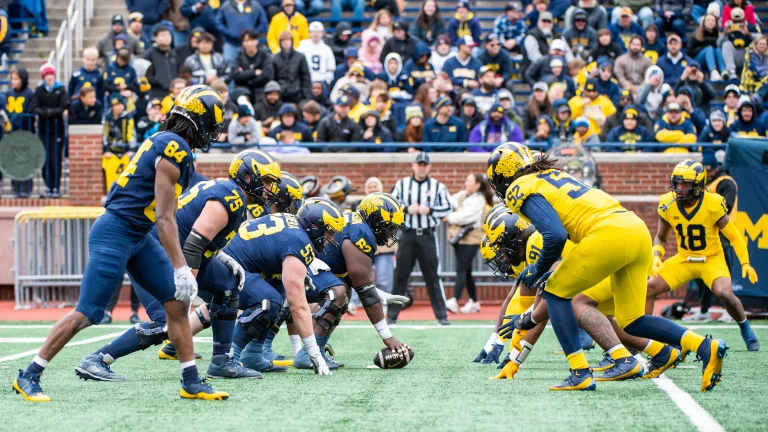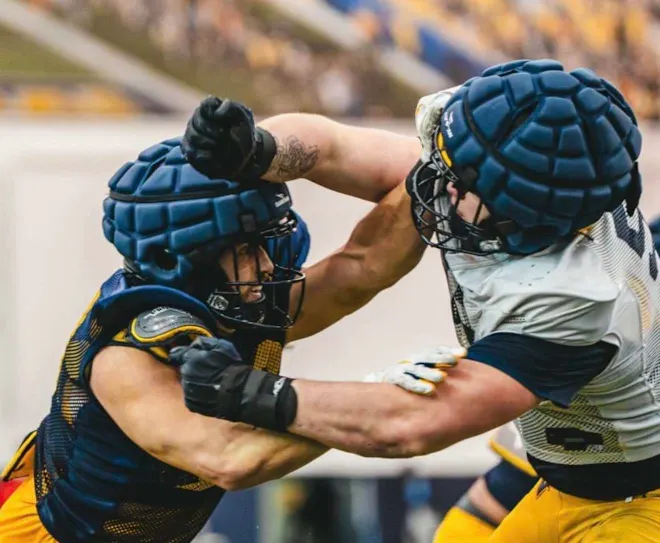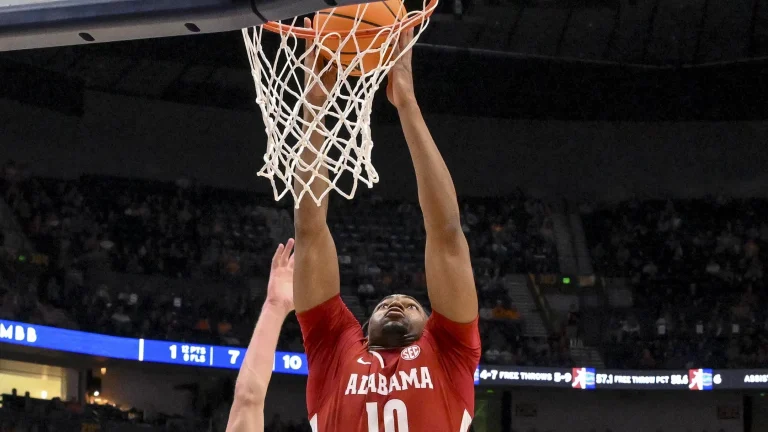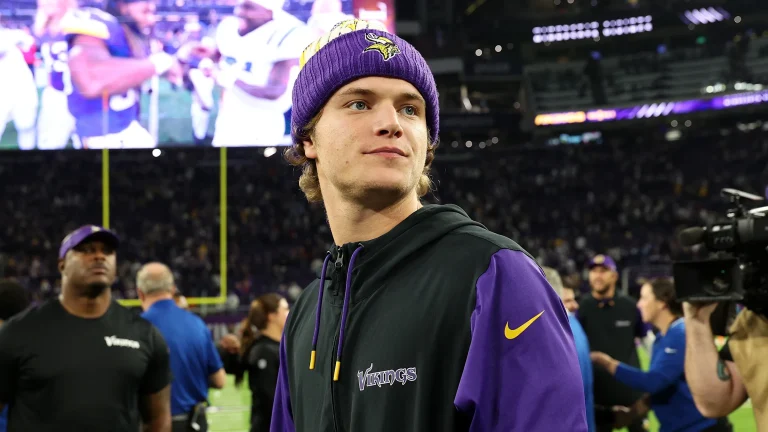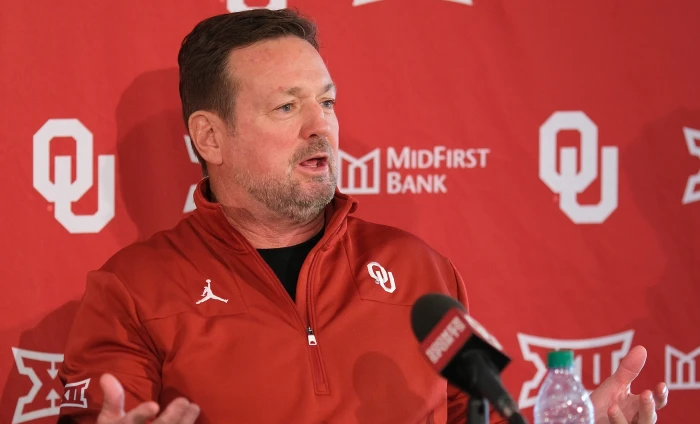Notre Dame Notebook: Mike Denbrock Talks Life After Riley Leonard, Blake Hebert Development
For the first time in Marcus Freeman’s tenure as Notre Dame football coach the Fighting Irish will have a repeat offensive coordinator. Freeman had one and done coordinators in Tommy Rees and Gerad Parker in his first two seasons before hiring Denbrock an offseason ago after Parker left to become head coach at Troy.
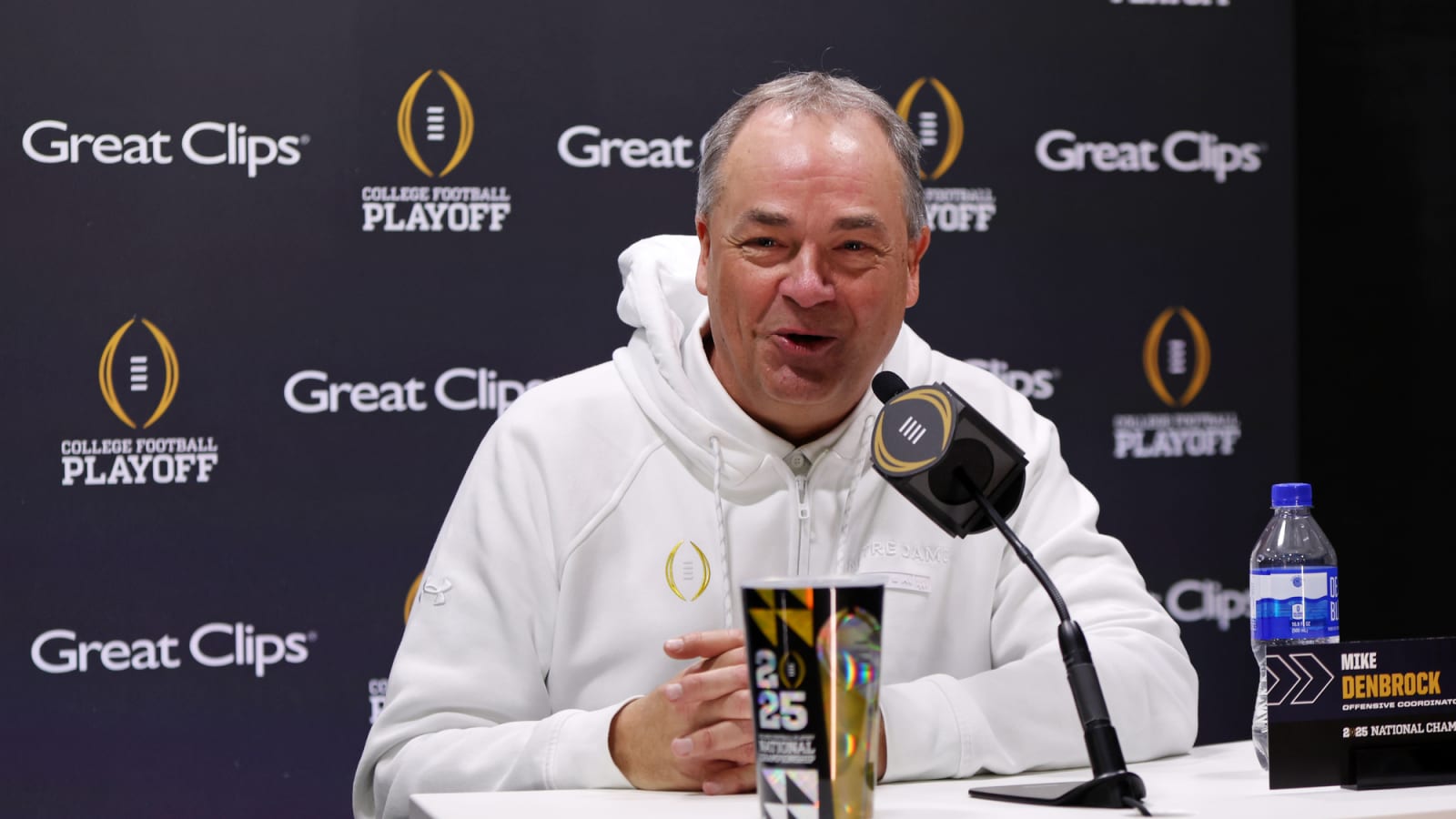
Last year’s Denbrock offense averaged 36.1 points per game and 399.1 total yards over the course of the school record 16-game schedule that saw the Irish play in the national championship game. Both averages fall between the numbers Rees (31.8/396.2) put up in Freeman’s first year and what Parker (39.1/432.2) averaged in year two.
Denbrock took over the offense prior to last spring and now has a new set of priorities heading into his second spring in his return to Notre Dame.
“I would describe year one as finding out who you can be, teaching scheme, trying to get your place offensively to being competitive in all aspects, so that you can win some football games,” Denbrock explained. “What gets lost sometimes is enough valuable time to teach and dig into really the detail of everything that you’re doing. Year two offers you an opportunity to really dig down and drill down on specific details of everything. From situational football to what you’re doing with your stance and all those different things. All the fundamentals of the game as well. All that adds in together.
“If you look at the way we played a year ago, details are missing all over the tape,” Denbrock continued. “If we just fix that, the leap that we could make offensively is pretty good. That’s without adapting scheme and changing this and changing that. That alone, being on top of our business at all positions and understanding the game better, understanding the scheme better, that starts with the quarterback position, because we put so much on that guy. But that’s everybody.”
Moving On After Riley Leonard
No matter which quarterback wins the starting job this fall, the offense will look different than the one Riley Leonard ran last season. None of Steve Angeli, Kenny Minchey or CJ Carr are likely to approach the 906 rushing yards or 17 rushing touchdowns Leonard had in his one and only season at Notre Dame. But does that mean that Denbrock is essentially installing a new offense post-Leonard?
“No,” Debrock remarked. “From a passing game standpoint it will look pretty similar in a lot of ways. Obviously there’s always little changes here and there. But where it’s going to probably look the most different is in the run game where we’re going to have to not be as quarterback heavy as a run team. How do you make up those yards? What do you do? Do you get into running some direct snap things? Do you get into using motion as a weapon a little bit more? How do you account for them screwing an extra guy down in the box? You hope you do that by having some dynamic players on the perimeter, so when you do that we’re going to sting your butt. It’s a balancing act. We’ll get the run game situated around whoever ends up winning the job. But when the decision gets made, that’s kind of how that will kind of fit together.”
Regarding The Receivers
Two of Notre Dame’s top three producing pass catchers, tight end Mitchell Evans and wide receiver Beaux Collins, from a year ago are gone. But the No. 2, 4 and 5 producers, receivers Jaden Greathouse and Jordan Faison and running back Jeremiyah Love, are all back as are a slew of younger receivers as well as the pending summer addition of Virginia wide receiver transfer Malachi Fields.
The Irish had 26 dropped balls last season. Collins had the most with seven, Faison had six, Evans had three, and Love dropped two passes. Nobody else on the returning roster had more than one drop. But that is an area that Denbrock is targeting for improvement in 2025.
“We dropped the football way too much last year,” Denbrock commented. “We’ve got to make the plays. I don’t know if you’d call them ordinary plays, but we need to make the plays — the ones that are 100 out of 100, we’ve got to be 100 out of 100. That comes with consistency in depth, consistency in route running. For a receiver, to be honest with you, it really shouldn’t matter who the quarterback is. I need to understand space and spacing and depth and specifics of techniques of route running. Going into year two, I know (receiver) Coach (Mike) Brown’s had a great opportunity to really have a whole year with these guys now. You can see that starting to come along. I like the depth we have there. We’ve got to get some guys to emerge and play more consistently.”
On Blake Hebert
The majority of the attention on this spring’s practice is the quarterback competition between Angeli, Minchey and Carr. Each of those three enrolled early in what would have been their final semester of high school to get a jump start on learning the Irish playbook during that spring semester.
Blake Hebert has followed suit this spring for the Irish. The 6-3, 223-pound former four-star recruit has his own workload in his first college experience this spring.
“We ended practice today with what we call basic seven-on-seven, which is really just some of our core passing game principles that he’s getting his feet wet with,” Denbrock said after a recent practice. “Put the young receivers out there and let those guys develop some chemistry and do some of the base offensive stuff that we do. That’s where he’s getting the majority of his reps. When we break up into group periods and things like that, he’s gotten an opportunity to kind of have the keys to the Ferrari a little bit and has done a nice job with it. Smart guy.”
